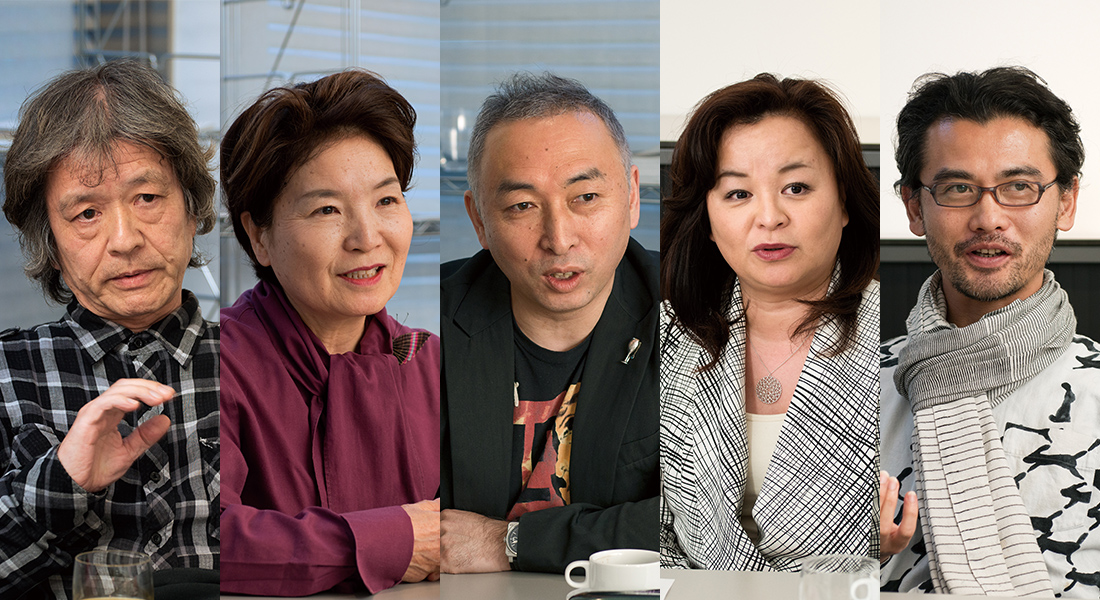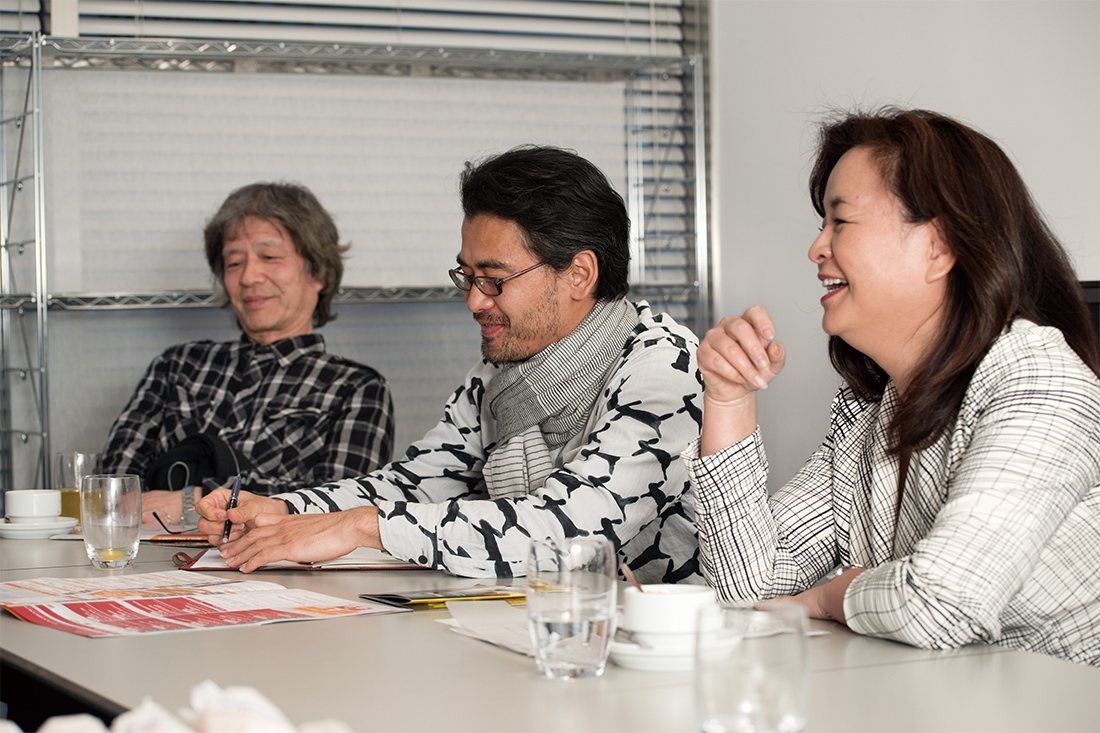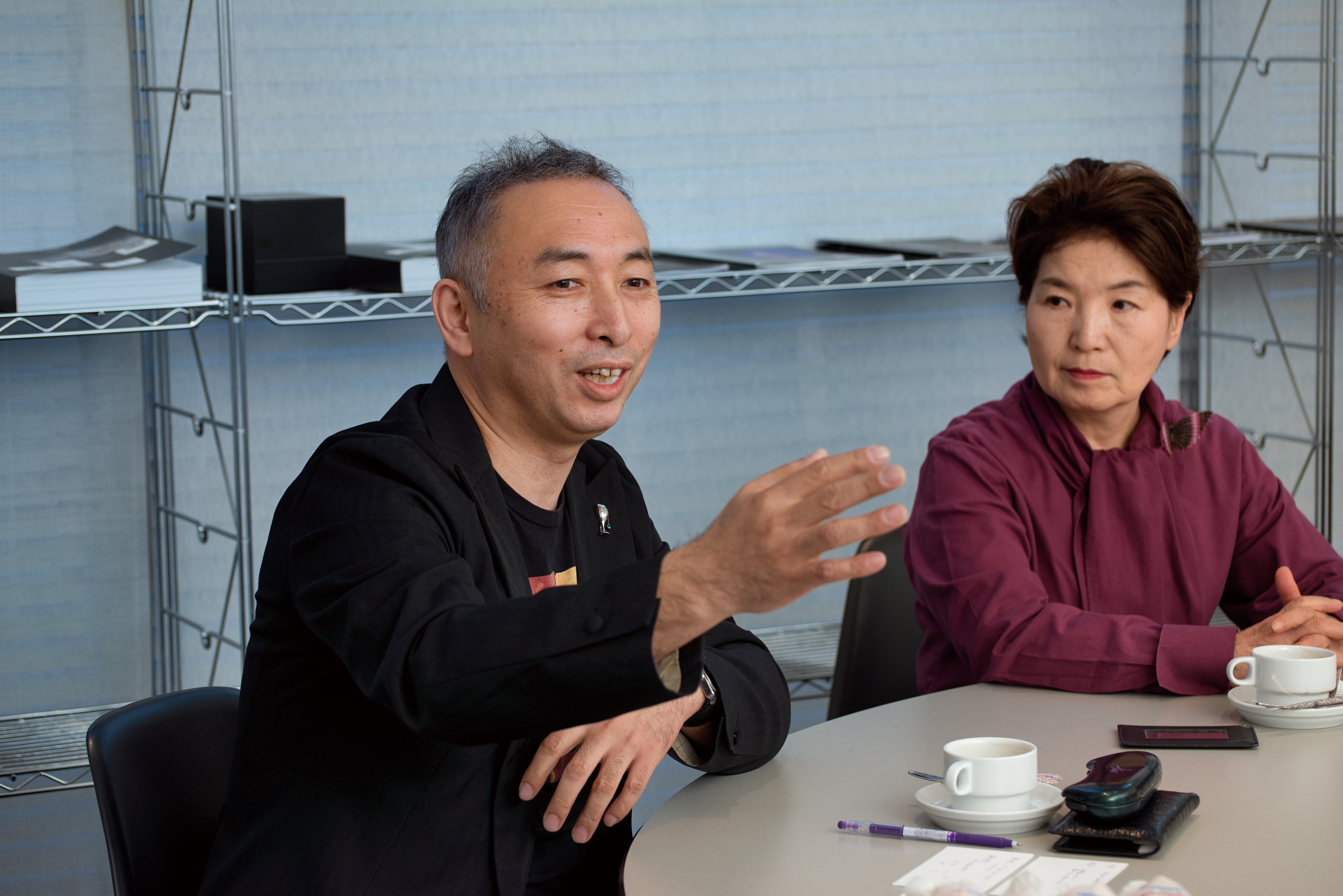Feature

ROUND TABLE2018.12.21
What we wanted to convey
through ENLIGHTEN ASIA IN JAPAN #2
Lighting Designers/Hiroyasu Shoji, Tatsuoki Nakajima,
Reiko Chikada, Miki Matsushita, and Izumi Okayasu
The World of Lighting Design
―What do you think the lighting design world and designers, as well as manufacturers, should do in the future?
| Shoji | I think we should define a “lighting designer.” Mr. Zhang Xin, who participated in a seminar at this event, said that according to some people, there are 20,000 lighting designers in China [laughs]. To be precise, the number is for “people who are involved in lighting.” There are 70 members of the IALD in Japan. The total membership of the IALD is about 700, so 10% is Japanese. But if it is said that only 70 people are lighting designers, that is not the case. There are more people who work on lighting designs but are not IALD members. Therefore, there are many times more lighting designers than 70. The IALD doesn’t allow employees of lighting manufacturers to be IALD members. It says people who work in manufacturing/selling lighting apparatuses cannot be members. Based on the IALD definition, 70 people fall under it in Japan. There may be people who meet the requirements but have not become members. There are many in-house designers rightly working for manufacturers, and they propose concepts that are similar to the members’. Then, why? The IALD says that when a designer needs to decide whether to add or not add a lighting apparatus to a certain area, the manufacturer’s in-house designers almost always decide to add it. Because it’s beneficial to the companies they work for. The definition of lighting designers should be decided upon, taking into account such contextual aspects. |
| Nakajima | A designer of lighting apparatuses cannot become a member? |
| Shoji | Designers of lighting apparatuses weren’t mentioned, but I expect there is an evaluation to see how the designers are connected to manufacturing and sales. |
| Nakajima | Many people still misunderstand that lighting designers are designers of apparatuses. We’d like a definite name for our occupation. Sometimes terms like lighting consultants or lighting conceptors are used, and I don’t know the difference. |
| Shoji | I’m not sure either [laughs]. Within the frame of architecture, a person responsible for lighting is a consultant. What the person does is designing, but he/she is a consultant since he/she gives instructions and is responsible for materializing the design. Many non-members of the IALD are paid for their lighting designs by back margins of lighting apparatuses, rather than being paid for design fees. The IALD is working on a plan to charge legitimate design fees. |
| Matsushita | Lighting is also a discipline. You are teaching at schools, right? I also teach classes at several colleges, but each college has different terminologies, such as lighting studies, lighting design studies, or lighting plan studies. Unless it’s properly defined by an organization, like the IALD, lighting is not recognized as a discipline by the Japanese Ministry of Education, Culture, Sports, Science and Technology. There are many candidates for lighting designers. But just how to expand it as a business model is unknown. It must become a field that forms an academic discipline. |
| Nakajima | It’s the same in the interior design field, for example. There isn’t a national certification, unlike for architects. I think the field is not yet systematized. “What is a lighting designer?” is perhaps similar to “what is an interior designer?” |
| Okayasu | In my case, I named my office Lighting Design, but I’m often regarded as a little bit different kind of designer [laughs]. If users are happy with my taste, I will sometimes add it, or sometimes I don’t get paid. I may be a designer farthest away from the business model that Mr. Matsushita was talking about. I strongly agree with systematizing lighting design as an academic discipline. I think it’s important. However, learning about lighting and business models there don’t necessarily promise success as a lighting designer. Isn’t there one more step of something needed for a designer? Interior design is not yet systematized, as mentioned earlier. In this situation, it’s whoever can create interior designs. Unless lighting design is clearly systematized, everyone might partake in lighting, causing a chaotic situation. Is it better to avoid such a situation, or is it better to have a borderless situation? We don’t even know if systematization would prevent a borderless situation. |
| Chikada | I think we are in a bipolar condition currently. One case is where lighting designers are actively expanding their expertise. Another direction is where large organizations precisely conduct lighting control and design. Especially with large-scale projects, extensive lighting designs require solid cooperation with other areas, necessitating the ability to manage it. Projects with such scale are impossible to handle in a borderless manner. Small offices like ours are relying on individual characteristics, so we should instead penetrate into a borderless area and exert our individualities. |

Many people still misunderstand that lighting designers are designers of apparatuses.
We don’t have a definite name for our occupation. Sometimes terms like lighting consultants or lighting conceptors are used, and I don’t know the difference.
―Architecture is in a similar situation. Large-scale projects are for general contractors or major design offices. The names of individual architects can be seen in just a few of them. Independent architects generally work on houses, small commercial facilities, and interiors. Meanwhile, interior designs—the world where craftsmanship used to stand out—now use cheaper but lower quality items from China or Southeast Asia. It may be inevitable due to economic reasons, but the world of interior design has sadly became superficial.
| Shoji | First of all, I hope the number of lighting designers in Japan—70 or many times more than that—will increase. What does the increase in lighting designers mean? Putting it simply, lighting will constitute a higher percentage of the economy. At the same time, the sphere of activities will be expanded . Some designers might head toward artistic directions and some toward engineering. Before judging what is good or bad, I think it’s necessary to prove the value of lighting design in society. We are in a stage of increasing the number of lighting designers so that they can be put on a sieve, rather than increasing the number so that they can be screened out. |
| Chikada | I am currently a member of the IALD professional membership committee. It’s for certifying members who produce higher quality works as professional members. We get applications from IALD members all over the world. When looking at their portfolios , the attractive ones are large-scale projects, after all. Usually, these projects are done by senior designers or directors of major lighting consultant companies. Whereas, the projects of small offices or independent designers are unfortunately small-scale and unattractive. But they still have a chance. There is an increasing number of renovation projects. I think that lighting designs with more personal tastes—which are impossible in large-scale projects—can be used in such projects. |

First of all, I hope the number of lighting designers in Japan—70 or many times more than that—will increase.
What does the increase in lighting designers mean?
Putting it simply, lighting will constitute a higher percentage of the economy.
What we wanted to convey through ENLIGHTEN ASIA IN JAPAN #3 Words to express lighting
